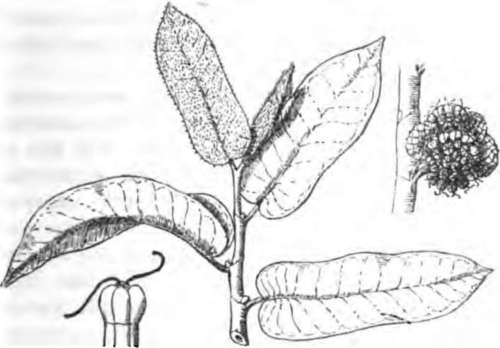Castilloa
Description
This section is from the book "Rubber And Rubber Planting", by R. H. Lock. Also available from Amazon: Rubber And Rubber Planting.
Castilloa
Castilloa elastica is the source of the Ule rubber of Central America and of the Caucho rubber of Peru. The species extends from the South of Mexico to the North of Peru, where it is separated from the territory of Hevea by the watershed of the Andes. In Panama a different species, Castilloa Markkatniana, occurs, which is considered less satisfactory as a source of rubber. It is probable that it is this species which has been introduced into the East This may account for the somewhat poor results which have been obtained with Castilloa in British Colonies.
Castilloa has very large oval leaves, which are arranged along both sides of special branches. The latter fall off with the leaves, and the whole thus simulates a compound leaf. The flowers are massed in dense heads, and each gives rise to a single seed which is white and comparatively small. The bark is very hard throughout, and offers considerable resistance to tapping. The latex tubes are larger than those of Hevea or Manihot, and are entirely devoid of the cross partitions which characterise the early stages of the latter. Partly for this reason more rubber is obtained at a single tapping, but the trees must then be rested for a considerable time before a fresh supply becomes available. The trees occur naturally in small groups along the banks of running streams from sea level to an altitude of 1500 feet, but they do not grow well in marshy soil.
Tapping is carried out by making long slanting cuts in the bark, sometimes extending right round the tree in the form of one or more spirals. The flow of latex is complete in 24 hours, and in some districts the tree is then cut down in order to obtain the whole of the available latex. The latex is acid in reaction, and coagulation is effected by the addition of the alkaline juice of certain plants or of a solution of soap. The process is sometimes carried out in rectangular pits in the ground lined with clay. The rubber thus obtained contains numerous impurities. Owing to its greater purity, the rubber which has dried on the tree fetches a higher price.

Fig. 3. Castilloa elastica.
Continue to:
